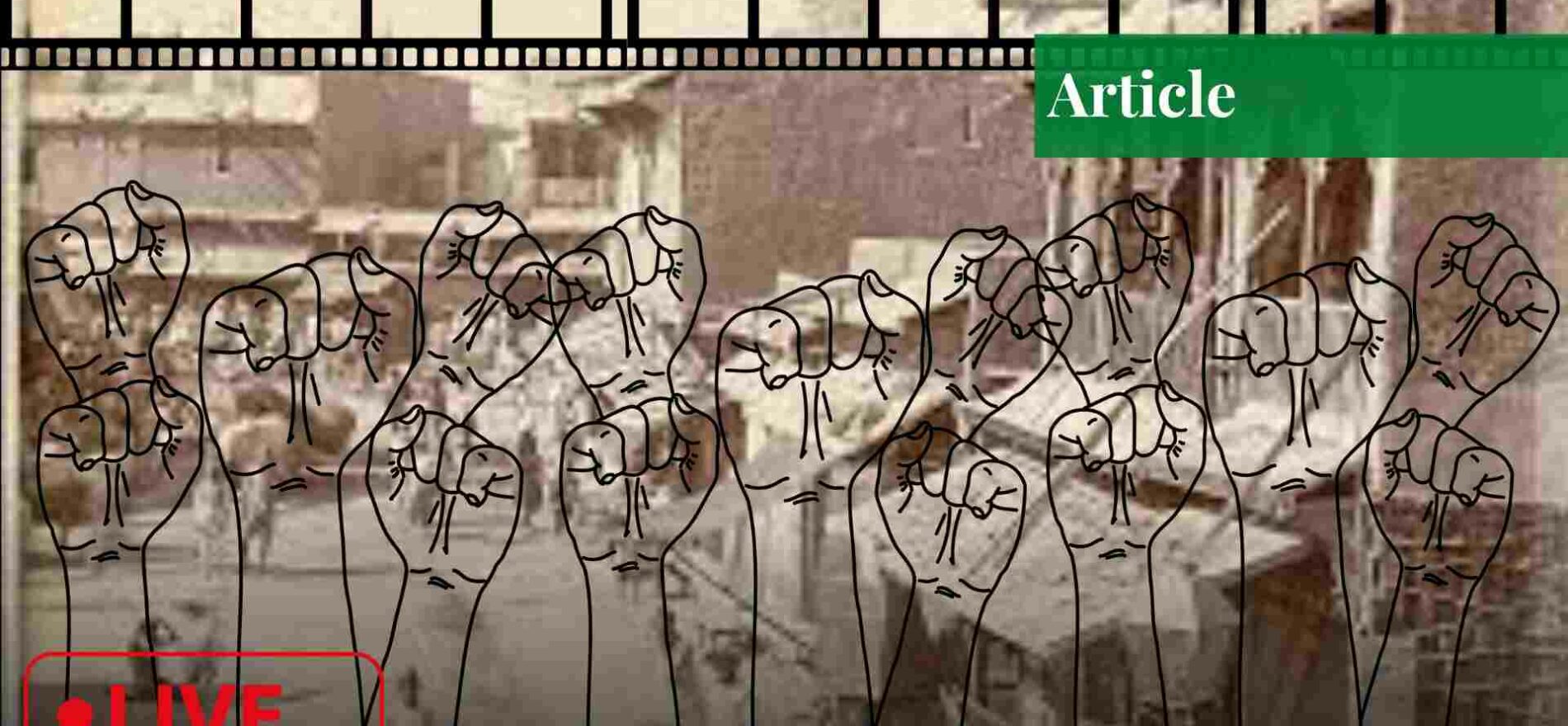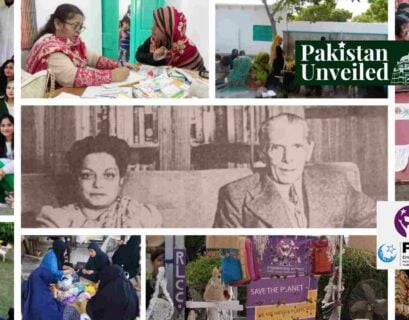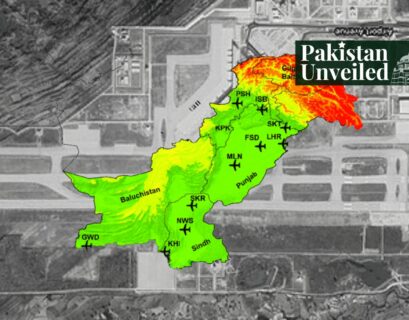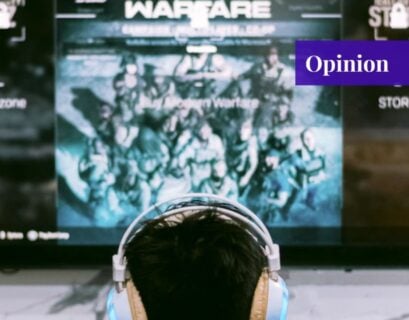In the shadowy alleys of Lyari Town, a neighborhood in Karachi survives with its vast history of culture and resilience. What lies within are stories of gritty street life, identity, and the ubiquitous influences of organized crime. Today the Gangs of Lyari hide in the shadows yet their fear lurks at every corner. These gangs have woven themselves into the multi-colored fabric of the community, depicting the careful portrait of a struggle to survive while balancing the dark intricacies of power and influence.

Diving into this world, the role of media emerges as a prevailing force, a double-edged sword that on one side exposes the darkness this world holds, yet the other sensationalizes the tantalizing stories of the gangs and communities that make this neighborhood home.
Role of Media
Previously, popular media and other forms of discourse within media have played a prominent role in highlighting the rampant violence that these criminal gangs have brought upon the neighborhood. Often painting the working-class area of Lyari Town as a dangerous and no-go area for citizens. Further insinuating and propagating the negative narrative portrayed by various news outlets. Pushed by mass media, this narrative showcases the working middle class as a demographic that is consistently prone to a life of criminality, thus further emphasizing that the violence occurring in Lyari is the result of its underprivileged, uneducated, and underdeveloped conditions. Ethnic groups such as the Baloch are stereo-typed as those inclined to the use of violence and militant activities additionally having more of a chance of being related to criminal activities, and operating with under-ground mafias and criminal gangs, much like those established in the heart of Karachi.
Although media has been proven to be an essential tool, in highlighting the issues faced by these communities and additionally aiding in raising a general awareness about the situation, it has been very instrumental in creating a sense of pressure for law enforcement agencies to take action against the ongoing criminal activity. Since 2013, the gangs and security forces have encountered each other in numerous battles, and amongst the crossfire, many locals have been wounded. Several have had to shut down their businesses and pull their kids from schools as educational institutions shut down as aggression and violence escalated.
On the other hand, this lockdown unleashed a wave of creativity emerging from the homes of these hard-working locals. The neighborhood previously known for its violence has once again made its way into the spotlight because of its emerging footballers, boxers, rappers, and entrepreneurs. It has also become a growing hub of advancements in the field of artificial intelligence and information technology.
The rise of underground rappers and the musical genre of hip-hop in Lyari Town is reminiscent of the hip-hop scene that transformed the African American communities where birthed from the ghettos of the Bronx, iconic rappers such as Suge Knight, Tupac Shakur, and The Notorious B.I.G. used rap to address the insecurities and injustice they faced in their communities. Inspired by the likes of these rappers came musical artists ‘The Lyari Underground’, Kaifi Khalil, Eva B, and many more.
Transcending gendered roles and age gaps, hip-hop and rap music have now become the anthems for the people in Lyari. Transforming the neighborhood into a hub of music production. Despite the genre not being common in Pakistani households where Bollywood or pop music has reigned supreme for decades, these artists have broken barriers of becoming creatives in the industry, offering a sound unfamiliar to listeners in the state. Further breaking class boundaries where individuals of working-class families are contributing to music that has been dominated by the likes of those with privilege. Mobilizing a tool accessible to all, social media enabled these artists to share videos and clips of themselves performing their art and eventually gathering millions of views online.
Lyari has also become the ‘Football Hub’ of Pakistan, being deemed as ‘Mini- Brazil’ altering itself from the previous title of ‘Little Columbia’. Where at one point the entire men’s national team consisted of players from this particular neighborhood, the decline in their love of football was a product of various factors with the most dominant one being unable to pursue their careers as professionals due to financial constraints. The neighborhood is now familiar with over 178 football clubs that are officially recognized. Among these clubs is ‘The Karachi Football Club’ born in the year 2022, their coach Zubair Ghulam Rasool attempts to revive the love the people of Lyari have for the sport, creating a team of 23 boys under the age of 16; collaborating with foreign coaches and the Swindon Town Football Club (STFC) in England, giving these young footballers a chance to play professionally.
The neighborhood also now flourishes with boxers, specifically young girls and women who have challenged socially constructed gender norms to become the few women across the country participating in the sport. Escaping the looming pressures of marriage and early motherhood, these young girls break tradition and boundaries every single day. Despite financial constrictions, limited resources, and other forms of criticism these individuals pursue their passions, shattering stereotypes one step at a time.
The effects of community violence have been a widely discussed matter, however, in the case of Lyari, much is left to be uncovered. Community violence is often described as a condition or exposure to violence that is intentional and is committed in public areas by certain individuals in society who may not be directly or intimately related to the victim. These acts of violence can range from bullying, physical confrontations, mass shootings, or civil wars.
A study was conducted in the New Horizons Journal, aimed at understanding the impacts of community violence on children from the ages of 12 to 18 specifically in the case of Lyari. These above-mentioned ‘no-go areas’ often lead to anti-social behavior being exhibited among these children despite not experiencing short-term levels of symptoms of stress or aggressive behavior. They find themselves numb and de-sensitized to the activities around them. On the matter of long-term effects, these children experience loneliness, insomnia, post-traumatic stress disorder, cognitive disabilities as well as violent behavior and psychiatric disorders. Additionally, children also experience an increased sense of fright, having violent dreams of being robbed, killed, or shot at. Furthermore, children in these areas have also exhibited imitative behavior. Imitating the actions of prominent figures in society leads to these children ultimately adopting these lifestyles.
The youth and children are notably easy targets for gangs recruiting them through school systems in the neighbourhood as well as those living on the street. Gaining affiliation with these gangs not only provides them with protection but promises them money and access to drugs. This invisible demographic, often considered to be a pest by others older than them, makes them a perfect tool to carry out target killings on behalf of the gangs. They’re taught the basics of carrying weapons and are often armed. Many also act as messengers for these groups, their age helping them avoid detection from intelligence agencies.
With a rising sense of insecurity and fear, the people of Lyari have had no other option than to support gangs that reign over their neighborhood. Resorting to certain bystander tactics, such as restricting movement, taking certain set-out routes, limiting their exposure to public spaces, and reducing the number of areas where individuals feel comfortable in and once considered home. This further reinforces the status held by these gang leaders as all-powerful and ever-expansive.
Young Baloch men often experience a higher level of fear and insecurity as they are frequent targets of security forces, rival political parties, and gangs. For them, avoidance of certain areas and the restriction of movement lead to a rise in unemployment often resulting in them seeking employment opportunities out of state, most notably in the Middle East in countries such as the United Arab Emirates, Saudi Arabia, Qatar, Kuwait, and Oman. Another factor that contributes to this isolation includes the marginalization of dark-colored men. This stereotyping additionally leads to a lack of employment opportunities and social mobility.
Often local businessmen in the neighborhood of Lyari resort to looking for opportunities to expand elsewhere as local gangs resort to ‘Bhatta’ (extortion) and racketeering. Impacting their earning and leaving them to a life of economic insecurity and an endless loop of financial struggles.
Amid these clashes and operations, even Pakistan’s late social worker Abdul Sattar Edhi was denied entry into the neighborhood. He emphasized how he had been given protection while aiding the people of Iraq and Gaza in their times of need, yet was unable to help his own people; a tragedy at its finest.
If you want to submit your articles, research papers, and book reviews, please check the Submissions page.
The views and opinions expressed in this article/paper are the author’s own and do not necessarily reflect the editorial position of Paradigm Shift.


















